by Denisa Tomkova // Oct. 9, 2020
In Polish art history, social practice has its legitimate place. In the 1970s, Contextual artists believed in creating work in specific contexts, and with the moral responsibility of the artist, as well as art’s aim to penetrate and to change social reality. This mission has become actualised in the works of socially-engaged contemporary artists today. Polish-born and London-based artist Alicja Rogalska is one of those artists. Her work is research-based, contextual and collaborative, and addresses everyday socio-political issues. Rogalska is currently pursuing a practice-based PhD on future imaginaries in social practice at Goldsmiths College in London. The core of her work is in dialogue with others: Rogalska places a special emphasis on the relational aspect of her work. Recently, her collaborative work has explored speculative approaches to imagining future collectivity and has served as a powerful tool for developing empathy with others.
Besides the potential of socially-engaged art to create solidarity networks and form new alliances, Rogalska points out the pitfalls of enforced kinship and explains how some exploitative relationships become obscured in the art context. We spoke to Rogalska about kinship in socially-engaged art and about care and collaboration as feminist working tools.
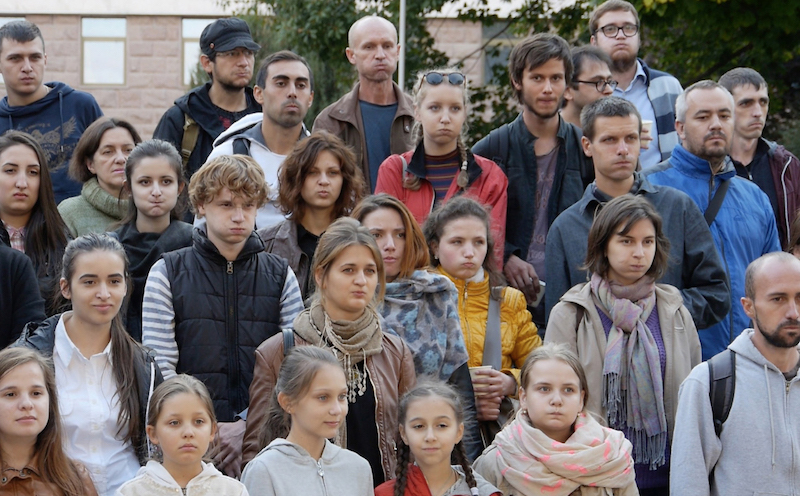
Alicja Rogalska: ‘Silence Of Sources’, 2016, video still // Courtesy of the artist
Denisa Tomkova: Let’s start with your art practice in general. How would you describe it?
Alicja Rogalska: I mostly work in a collaborative and participatory way, in specific contexts and with various groups and individuals whom I invite to form temporary collectives based around shared issues, political commitments or interests. After a period of research, often done in situ and collaboratively, I set frameworks and structures for those inquiries to happen, then allow for improvised responses to form and document the process in various ways. The engagement levels vary from short conversations with strangers to processes lasting several months. Usually, the work takes the form of situations, performative actions, installations and videos, centred around social and political issues such as work, class, gender, migration and other types of inequalities. In recent years, I’ve become more interested in speculative rather than purely critical approaches, trying to envisage possible alternatives to the current conundrum we find ourselves in. I see future imaginaries and utopia as methods for transcending our often set ways of thinking about societal and ecological problems.
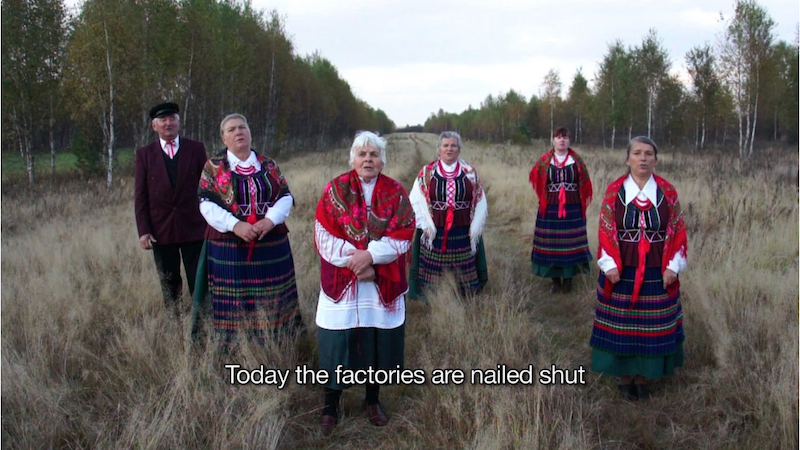
Alicja Rogalska: ‘Broniów Song’, 2012, video still // Courtesy of the artist
DT: In anthropology, kinship is the web of social relationships that form an important part of the lives of all humans in all societies. We can also take this definition to describe social practice and collaborative art. Can you tell me about relationships created or even obscured by socially engaged art projects?
AR: We tend to think about kinship as something positive; however, it can also mean a close but still abusive relationship, as sometimes happens in families. Social practice rarely happens spontaneously or exists in a vacuum. At least in the professional art context, most often there is a commissioning body, a budget, a plan and a timeframe set by the funders, institutions and curators before an artist and participants are even part of the picture. These prior decisions have a huge impact on what types of relationships are possible within such a framework. Once you already have a collaborative or socially-engaged project going, it forms only a small part of this web of other relations. When discussing the ethics of engagement we most often talk about the artist’s relationship with and responsibility over their participants or collaborators, which is of course super important, but I also think there needs to be a lot more reflection on the structural aspects of social practice and how many forms of collaboration and participation are excluded or forced because of the underlying conditions set in place beforehand. These are quite often obscured on purpose, because of the opaque power structures and relationships in the art world, which we all know can be very exploitative and even abusive. Artists can still do a lot in that situation: bend the rules, negotiate the conditions or withdraw. But the extent of that also depends on their power standing, symbolic capital and economic situation.
DT: In your PhD, you address the current crisis of our political imaginary through collaborative speculation, talking about utopian and futuristic ideas as a method to address our current issues. Can you tell me more about your project ‘Dreamed Revolution’?
AR: In 2014, I was commissioned by Muzeum Sztuki and Teatr Nowy in Łódź to work on an Avant-Garde and Socialist Realism project. I dug into the archives of both institutions, looking at their legacy and relevance today, and what really stood out was this immense belief that we can completely change the world and create a new, better humanity and a more just society out of the ashes of revolution or war. It was a few years after the financial crisis, after the Occupy movement and the Arab Spring, and it felt like this kind of radical imagination was missing in the world. I decided to focus on the idea of the future, rather than fetishise constructivist aesthetics, for instance, fossilising past radical ideas by treating them as purely formal experiments. I invited activists to work with me on the project—after all, they are the people actively trying to change the world and make it a better place.
Whilst looking for a formula that would help unlock intellectual, linguistic or social barriers limiting the horizon of our political imagination, I came across progressive hypnosis. I found a great stage hypnotist, Jurij Mokriszczew, whom I asked to put me in a trance when we first met. In the final performance, over a dozen local activists (and a few audience members) were hypnotised and asked to collectively articulate possible scenarios for future society. Since not everyone is susceptible to hypnosis, some people weren’t really hypnotised but the format of the event still allowed them to speak about weird and radical ideas they wouldn’t probably disclose in a panel discussion. Many of the visions were a version of what we had already heard before from avant-garde thinkers or earlier utopians, which was interesting in itself: how do we know if an idea is actually new?
DT: I find the collaborative working approach to be a very feminist aspect of your practice. Once I heard a story of a critic of Darwin, Antoinette Brown Blackwell, who argued that the world is all about the cooperation of the species, rather than rivalry. Similarly, Judith Butler argues that “we are all, regardless of our political viewpoints in the present, born into a condition of radical dependency.” Despite all that, I find there is still this focus on (male) genius and on the individual in the art world.
AR: I totally agree. Last year I participated in City of Women, a feminist art festival in Ljubljana, and there was this interesting discussion after my artist talk about whether my work is actually feminist, because feminism is not my main topic per se. There is a difference between what the work is about and how it comes into being and operates in the world. I have met artists whose declared values and the content of their art were in stark contrast to their personal and professional ethics and the way in which the work was made. You can make work about feminism without being a feminist in real life. You can make work condemning exploitation while exploiting others.
Your mention of Blackwell reminds me of the short story ‘The Carrier Bag Theory of Fiction’ in which Ursula K. Le Guin talks about how, in the telling of human history, we focus on violent acts—whether killing mammoths or wars—whereas actually the survival, evolution and success of the human species was essentially possible thanks to care, collaboration and the everyday maintenance traditionally done by women (but not only). From that perspective, a bag to collect and transport food or to carry a sleeping baby in is more important than all the weapons that we see in museums representing ancient civilisations. Anthropologist Margaret Mead, when asked what the first sign of a civilisation was, replied it was a healed broken femur. It meant the person it belonged to was protected and taken care of for at least six weeks, whereas in the animal kingdom when you break a leg you become food for predators and die.
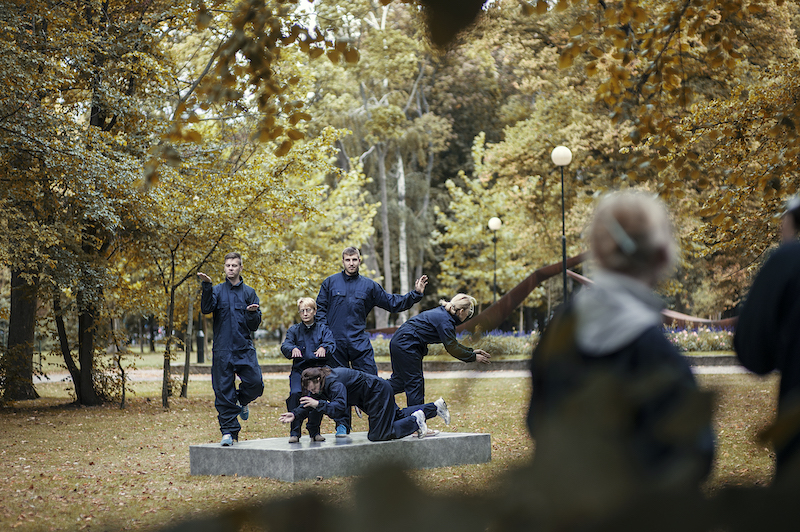
Alicja Rogalska: ‘Monument To Precarious Workers’, 2015, photo // Photo by Bogna Kociumbas
DT: How do you utilise this thinking in your social practice today?
AR: I’m currently working with Vienna-based Portuguese artist Ana de Almeida on a commission for the exhibition ‘Cybernetics of the Poor’ at Kunsthalle Wien. ‘NOVA’ is a futurist feminist live action role play (LARP) that Ana and I wrote for feminist and queer activists. We have invited artist Vanja Smiljanić to join the project for this iteration. The participants are invited to collectively create, through play, a narrative about the future, both in terms of different subjectivities, various groups and organisations, and how these groups intersect within a wider societal structure. I first became interested in LARP as a methodology for working with groups in a pedagogical way. It offers the possibility of temporarily becoming somebody else or something else, rehearsing different behaviours in a completely unknown situation or scenario, experimenting with new forms of relationships, and going through unfamiliar emotional states. Of course, we will never fully understand what it feels like to be a refugee, for instance, but through role-play we can come closer to it than just imagining it in theory. LARP engages not just the intellect, but also the body and the affects and can be a powerful tool for developing empathy. It is about unlocking child-like imagination, not to be childish, but to be able to see things anew. The purpose of the game is also to create a safe space to experiment with organising and building solidarity between different types of queer-feminist activist groups, which is especially important now, at the time of the revival of the extreme right-wing.
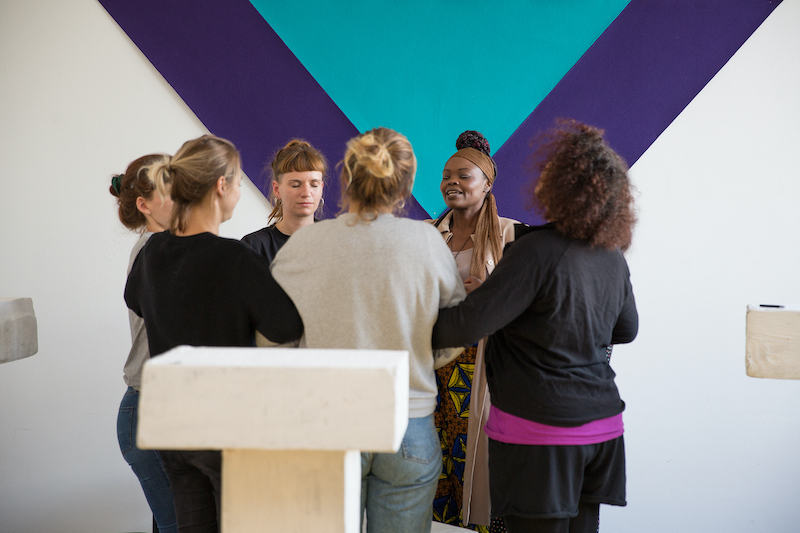
Alicja Rogalska and Ana de Almeida: ‘NOVA’, 2019, test run at VBKÖ (Austrian Association of Women Artists) // Photo by Claudia Sandoval Romero
DT: How much has the Covid19 pandemic informed or changed your thinking about the future?
AR: Since June, I have been working on ‘Room to Room’, a project for CCA Goldsmiths, which is a collaboration with vulnerable people living in sheltered accommodation in London: each of the six artists in the project was paired with a person who is self-isolating, whom they have never met before. We are mostly communicating over the phone, getting to know each other before deciding what we can do or make together. This has been one attempt to seek out ways to do social practice even in the current situation.
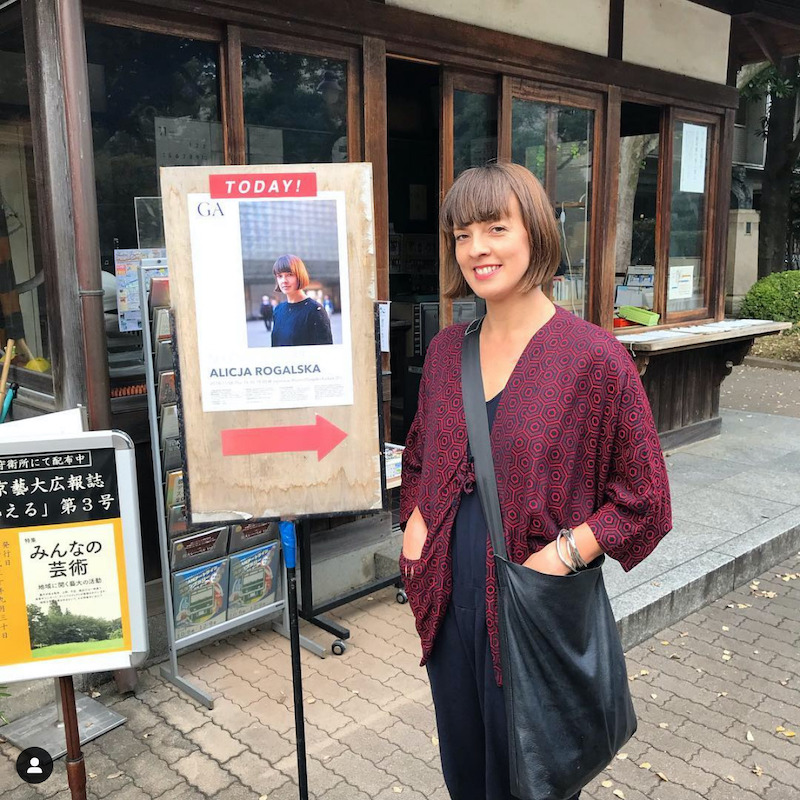
Alicja Rogalska, portrait // Photo by Martin Clarke
In general, my work relies on face to face contact with others, gathering people together in one room, or travelling to meet them, whether it is a women’s folk choir, a group of academics or queer activists. It is very difficult to create that sort of space online. We have become reduced to a tiny square on a screen. Obviously, it’s amazing we have these technologies at our disposal and I do use them a lot now both for projects and for teaching, but I just I don’t think it is sustainable long term. I don’t think as humans we can rely exclusively on digital tools as our method of communication, it’s just depressing and unhealthy. The pandemic will be managed in one way or another, it might take another year or two, but it will change.
This article is part of our monthly topic of ‘Kinship.’ To read more from this topic, click here.


























